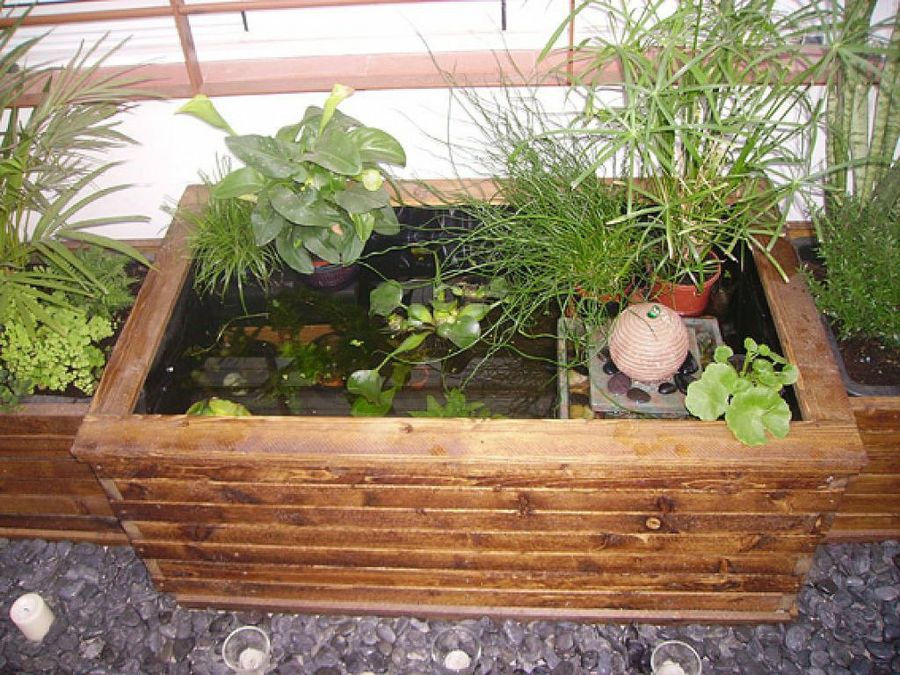Having a pond in the garden is an excellent option to give it a different and very elegant touch. Also, we don’t need a natural source of water.

The garden is the area of the house that requires the most dedication. Keeping it organized and in good condition is often difficult work, as well as giving it a sophisticated and elegant appearance. It is even more so when it has elements such as a pond or a small fountain.
Many gardening enthusiasts dream of a fantasy garden, where they can bring guests and that is beautiful but, at the same time, modern and simple.
Lately it has become very fashionable to have ponds that house aquatic plants or small fish and, although it seems an easy task, it is not. The most widespread are those with water lilies and lotus flowers.
The ponds must be properly located, since they need approximately 4 or 6 hours of sun daily, in which the shade of the trees should not interfere. Aquatic flowers need sunlight to flourish and maintain, so today we bring you 3 ideas for you to make and maintain your own pond at home.
Steps to build a pond.
Whatever look you want your pond to look like, there are general building rules that everyone will require, as well as the materials and tools that are used.
Materials.
- Geotextile blanket.
- Plastic.
- Sand.
- Gravel.
- Stones.
Tools.
- Scissors.
- Shovel.
- Stapler with staples.
- Hoe.
Pond construction.
1. Choose the right place.
We must choose a place that allows the passage of sunlight for about 4 hours a day. After having chosen the right site, you should start by digging a hole with the help of the shovel. The height will depend on your taste, but it is recommended to make it at least 1 meter, including a step at the top.
2. Add sand for the base.
Using the hoe, we distribute approximately 10 cm of sand over the entire surface. This will prevent the plastic from tearing or tearing when it comes in contact with the ground.
The sand should be compacted very well and be as flat as possible.
3. Plasticize the bottom of the hole.
- We will extend the plastic so that it covers the diameter of the hole, leaving a surplus on the outside.
- If the plastic you chose is very stiff, you can spread it out a few hours earlier and leave it in the sun to soften it and better mold it to the shape of the hole.
- With the help of stones (preferably large stones) we fix the plastic to the ground and keep it there.
4. Fill your pond.
- After it is well fixed, we will fill the pond with water. This will help to better seat the plastic and shape it.
- On the step that was inside the pond, we will spread the decorative gravel until it is full.
- We will complete the upper edge with slabs that will serve to provide more weight and as a decorative element.
5. Final touches.
- After cutting off the excess plastic, we will measure how much geotextile blanket will be needed and cut it with the help of scissors.
- We place it around the pond to help moisture pass without grass sprouting.
- It is best to create a wooden border that delimits the pond from the rest of the grass. The geotextile blanket will be fixed to this wooden fence with the help of the stapler.
- Once the blanket is spread, we cover it with gravel and spread it well until it evenly covers the entire area.
- Finally, only the decoration of the pond remains. You can fill it with aquatic plants or small fish, as well as place flowers around it.
Pond ideas.
After knowing what is needed to build the pond and having made a basic pond, you can include small variations that will give it a unique touch.
Pond with waterfall.
Although it is a bit more elaborate, you can include a waterfall system inside the pond, which allows the water to recirculate and create two levels. It gives a very sophisticated look, as well as being relaxing thanks to the sound.
Corner pond.
If you have a small garden, you can opt for this alternative. Locate the pond in a small corner outside your house and create a border of stones that will serve as a step for decoration.
Instead of gravel you can border it with small plants and, as in the image above, an excellent idea is to use old vases or flowerpots as a source of filling the pond.
Circular pond of plants.
Although it is simple, it has its touch. You can include stones or slabs inside the pond so that the bottom looks different and place a border of pure aquatic plants making the simulation of a wall but completely of flowers.


